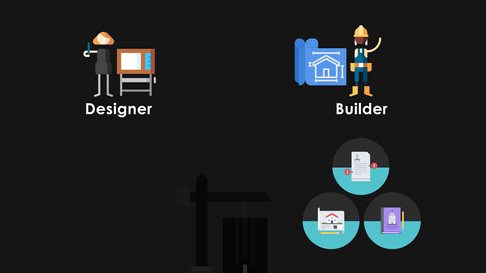COBie & BIM: A Better Handover Process - What is COBie?
- Bill Allen

- Jan 24, 2023
- 2 min read

To many, the amount of data required to complete the COBie spreadsheet seems incredibly daunting, but by the end of this series, you will see that with the right tools and proper coordination early on, you can minimize the amount of labor spent on COBie while still providing the owner with all the necessary data for the operation of the building.
The key to delivering a good COBie dataset is understanding its purpose and how it's meant to improve the data management process over the course of a project. COBie stands for Construction Operations Building Information Exchange, and its goal is to standardize and streamline the handover process to the building owners. Let's first talk about how the typical handover process looks without COBie:
Over the course of construction, the builder is tasked with recreating significant amounts of information and data that was originally created or identified by the design team or manufacturers. After spending hundreds of hours gathering all this info, its then delivered to the owner in the form of paper manuals,
CDs, and flash drives with little to no reference to their counterparts in the facility. Instead of trying to make sense of the mess before them, many owners instead choose to recreate or relocate this data once again so that it can be imported into their asset and facility management systems.
COBie looks to remove the inefficiencies in this process by identifying early on the extent of information that must be captured and exchanged at each phase of the project. This makes it easier for teams to organize data about installed equipment and other assets so they can provide the owner with a consolidated O&M manual in XML format. This format allows for easy consumption in both spreadsheet editing software as well as various facility management platforms.


Icons from www.flaticon.com Made by: Freepik Nikita Golubev Icongeek26 Smashicons Dimitry Miroliubov
About the Author

Ames Hardt
Design Application Specialist Ames has long held a deep fascination with technology, beginning to code as early as 12 to design personalized Xanga layouts with HTML and CSS. After graduating from Illinois Tech with a BArch and a specialization in Digital Design, Ames began their career training as an architect. While learning the ropes, it became clear how many ways software like Revit was lacking. Leaving their life as an architect behind, Ames took on a new role as Design Technology Specialist, tasked with optimizing clients' and firms’ workflows by implementing the use of software like Dynamo to automate the “boring” and repetitive tasks, leaving more time for architects and engineers to focus on design. In order to further expand the capabilities of Revit and Dynamo, Ames delved deeper into the world of programming, using C# and Python to develop custom add-ins and nodes tailored to the needs of a firms’ designers.
Outside of work, Ames enjoys cooking with their partner, spoiling their cat, and designing graphics for anything from silly t-shirts to marketing material for their friends. When they aren't tending to a bountiful plant collection or their community garden in the summer, Ames can be found lifting weights at the gym or at home playing video games.



















